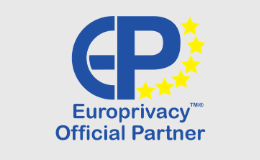Looking for?
What you need to know about trade marks
The slogan ‘Just do it’, Lacoste’s crocodile, the yellow colour of Zwitsal and the shape of Toblerone chocolate: what do they have in common? You wouldn’t think so right away, but all these signs are protected trade marks.
But what exactly is a trade mark?
A trade mark is a sign that an undertaking uses to distinguish its products or services from the products or services of other undertakings.
In addition, a trade mark also serves to guarantee the quality of products or services, to provide information about the products or services, to encourage potential customers to purchase the products or services, and to strengthen the reputation of the trade mark holder.
What types of trade marks are there?
Many signs (such as words, names, drawings, letters, numbers, colours, shapes, sounds, etc.) can be registered as a trade mark.
For example, there are:
Word marks | ‘Samsung’ |
Position marks |
|
Figurative marks |
|
Pattern marks |
|
Colour marks |
|
Sound marks | |
Shape marks |
|
Motion | https://euipo.europa.eu/copla/image/UB2V7J5SX5HSOT2UA6C4K4UFFSCMH2SD4KY… |
What rights do I have as a trade mark holder?
A trade mark gives the trade mark holder the right to:
- use the trade mark on the products and services that are being commercialised;
- transfer the trade mark or grant a right to use the trade mark (license);
- to oppose any third party who uses the trade mark without prior authorisation and to ask the court for an injunction.
How do I acquire a trade mark?
A sign can only be protected as a trade mark if it is registered. If you only want trade mark protection in the Benelux, you have to file an application with the Benelux Office for Intellectual Property (BOIP: https://www.boip.int/en). However, if you want trade mark protection in all countries of the European Union, you have to file an application with the European Union Intellectual Property Office (EUIPO: https://euipo.europa.eu/ohimportal/en/home).
To acquire a trade mark, you have to pay a fee. A trade mark registration for the entire European Union is more expensive than a registration for the Benelux.
Can each sign be protected as a trade mark?
In order for a sign to be protected as a trade mark, it must meet 3 (negative) requirements:
- Not be descriptive of the products or services for which the trade mark registration is requested. For example: a computer company can register the word “apple” as a trade mark because that word does not describe which products or services a computer company offers, but a fruit company cannot register the word “apple” as a trade mark because that word does describe which products a fruit store offers.
- Not appear on a list of legally “inadmissable” signs. For example: words with a racist message cannot be registered as a trade mark.
- Not be identical or similar to a sign that was previously filed for registration or registered by someone else in the relevant sector of products or services. For example: when a car manufacturer wants to register the sign “Audi” as a trade mark, the current holder of the “Audi” trade mark will be able to take action against the car manufacturer.
How long is my trade mark protected?
In the Benelux and in the EU, a trade mark right is valid for 10 years from the filing date of the application. However, the trade mark protection can be extended indefinitely with periods of 10 years at a time. This does not happen automatically but via an application for renewal and a new payment.
Do I have to mention a ™, ® or © to retain trade mark protection?
The symbols ™ , ® and ©originate from the U.S. and have no legal value in the EU. It is therefore entirely unnecessary to mention these symbols with your trade mark in order to acquire or retain trade mark protection. Nevertheless, the ® symbol (which stands for ‘Registered’) can be a useful tool to make third parties aware that your sign is registered as a trade mark and that they cannot use it. The sign ™ and © in the U.S. stand for an unregistered trade mark and a work protected by copyright respectively and are therefore less relevant here.
Is a trade mark the same as a trading name and a company name?
Although undertakings often use the same sign as a trade mark and trading name, both are different. Moreover, the trading name of an undertaking is not necessarily the same as its company name.
| TRADE MARK | TRADING NAME | COMPANY NAME |
Intellectual Property right? | Yes | No | No |
Function | To distinguish products and services | To distinguish one undertaking from other undertakings + advertising function | To identify an undertaking |
Registration required for protection? | Yes (with BOIP or EUIPO) | No, protection through visible, public and continuous use of the name
| Yes (with Crossroads Bank for Enterprises) |
Where protected? | In the territory of registration (ex: Benelux or EU) | Limited to the territory where customers are located | In Belgium |
Right? | Right to oppose any third party using the trade mark without prior authorisation Right to compensation | Right to prohibit third parties from using identical or similar name in your territory in such a way that confusion is created Right to compensation | Exclusive right on the name (so that others cannot choose it) Right to compensation in case of a similar company name that creates confusion |
Example? |
| Colruyt | Etablissementen Franz Colruyt |
About Timelex
Law firm Timelex specializes in (international) intellectual property (IP), trademark law and copyright. We assist clients in drafting and negotiating different types of IP related contracts and we assist clients in their intellectual property disputes. Please contact us for more information.














